Don Clifton chose to do positive work by helping people to build on their strengths. His work at The Gallup Organization led to many people across the world using the Clifton StrengthsFinder tool.
Writers associated with Gallup have also produced many books on the strengths approach.
These include First, Break All the Rules; Now, Discover Your Strengths; StrengthsFinder 2.0 and Strengths Based Leadership. Readers have become familiar with the classic Gallup question:
“Do you have the opportunity to do what you do best every day?”
The company continues to develop its ideas and tools. These can be found at the official web site.
Many people now offer services using the Clifton StrengthsFinder and other tools available from Gallup. The language used has passed into the knowledge base of organisations. The Gallup approach highlights people’s strengths in terms of 34 themes.
So a person might talk about their Top Five Signature Strengths as being from a list that includes titles such as Achiever, Activator, Communication, Connectedness, Discipline, Empathy, Futuristic, Positivity, Responsibility and other themes. You can find the complete list of 34 strengths here.
Several other organisations have sprung from Don Clifton’s work. These include, for example, The Clifton Strengths School. This is based in Gallup Drive, Omaha, Nebraska. As their site says, this is:
“ … an institution of higher learning grounded in more than 40 years of research in strengths science and positive psychology. We are a leader in strengths-based professional development and education.”
Philosophy and Background
Let’s begin by consdering the origins of Don Clifton’s strengths research. Here are some milestones that are described in more detail on the Gallup and the Strengths School sites.
Don was born in 1924, in Butte, Nebraska. After gaining a Distinguished Flying Cross in the Second World War, he achieved a degree in Mathematics before completing his doctorate in educational psychology.
He went on to become Professor of Educational Psychology at the University of Nebraska. There he began his revolutionary research into his key question:
“What would happen if we actually studied what is right with people?”
Martin Seligman, another giant in positive psychology, has explained that most funding for psychological research at the time was geared to studying problems rather than potential.
On the one hand this was understandable, because war veterans and others were suffering from difficulties. On the other hand several people tackled the challenge from a different angle.
Bernard Haldane, for example, was a pioneer in the modern career guidance movement. He invited veterans to recall their best working experiences.
Looking back at these times, were there any ‘transferable skills’ they could apply elsewhere? How could they use these to benefit potential employers?
Seligman believes that Don pioneered a similar trail-blazing path in positive psychology. As the Strengths School site says, he:
“… studied successful individuals using techniques that still are considered both innovative and rigorous.”
Don studied what people did right to achieve top performance. At first he identified certain life themes, but these were later translated into strengths themes.
His work provided solid recommendations for employers and individuals looking to develop fulfilling careers. The Strengths School site continues:
“In 1969, Clifton founded Selection Research, Inc., which began as a small business in his basement and grew into a large human resources consulting company that, in 1988, acquired Gallup.”
The acquisition was led by Jim Clifton, his son, who became CEO of The Gallup Organization.
Don acted as the guiding light in developing Gallup’s work on leadership, management and peak performance. He led teams of researchers whose work eventually led to creating the Clifton StrengthsFinder and The Gallup’s Q12.
The latter is a set of 12 questions for assessing employee engagement. These questions continue to be used to measure and improve leadership in organisations.
Gallup also produced a series of best selling books by writers such as Marcus Buckingham, Tom Rath, Curt Coffman and Paula Nelson. Don co-wrote some of these books, whilst others owed much to his work. The Strengths Site says his work was acknowledged when:
“In 2002, the American Psychological Association honored Clifton with a Presidential Commendation as the Father of Strengths-Based Psychology.
“An educator, thought leader, inventor, and entrepreneur, Clifton is remembered for his unusual ability to bring out the best in people and help individuals and organizations achieve outstanding results.”
Principles
The strength’s work of Don and Gallup is based on certain key principles. Let’s explore three of these:
People’s can clarify their strengths.
People’s greatest room for growth is in the area of building on their strengths.
People can build strengths-based organisations that achieve ongoing success.
People can clarify their strengths
Writing in Now, Discover Your Strengths, Don and Marcus Buckingham say:
“The definition of a strength that we will use throughout this book is quite specific: consistent near perfect performance in an activity.”
So how do you discover these abilities? Don and his colleagues at Gallup created an assessment tool called the Clifton StrengthsFinder. The latest version of this tool can be found on the Strengths Gallup site.
People can do an on-line analysis that highlights their top five ‘signature themes’. What do the themes look like?
The following paragraph gives a taster of three – Achiever, Context and Futuristic. But it is vital to visit the official site to see the full definitions.
Somebody with an Achiever theme, for example, loves to set goals, work hard and achieve those goals. They enjoy making lists and get a kick from crossing-off each item.
Somebody who has Context as a theme will gather data about the past to build up a complete picture. They believe such research is required to plot the way forward.
A person who is Futuristic will automatically focus on possibilities. Faced by a setback or problem, they quickly move to envisaging a positive future, a quality that often inspires other people.
Every theme does, of course, have pluses and minuses. Similarly, working in a team calls for knowing how to communicate with people who demonstrate the different characteristics.
Such skills are outlined by Tom Rath in his practical and complementary book Strengthsfinder 2.0.
The Gallup approach to strengths was broadly welcomed. There were, however, some reservations, even from advocates of the strengths approach.
Some observers said the themes described a person’s style, rather than their strengths. A person might operate successfully as an Achiever, for example, when doing something they did well, such as leading a particular type of team. But they behaved as a non-Achiever in other areas.
Gallup addressed this argument later by enabling people to go deeper into describing the specific activities they were doing when, for example, behaving as an Achiever. This enabled people to discover their true strengths.
People’s greatest area for growth is in
the area of building on their strengths
Don spent much of his life studying great performers. Based on these findings, he challenged the deficit model of development.
Such models paid lip service to people’s strengths. A typical one hour performance appraisal session, for example, might involve the manager saying to an employee:
“Right, you do these things well, so there is no need to explore these skills. Let’s spend the next 55 minutes looking at your weaknesses and areas for development. You need to become a more well-rounded person.”
Don and other thinkers turned this approach on its head. In Now, Discover Your Strengths he said:
“Each person’s greatest room for growth is in the areas of his or her greatest strengths.”
The Gallup approach underlines the fact that:
People with particular gifts in a specific activity can quickly reach the equivalent of 7/10.
People can then build on these strengths to embark on the exponential climb to reaching 10/10.
“But what about a person’s weaknesses?” somebody may ask.
“Shouldn’t these also be addressed?”
The Gallup approach was sometimes criticised for overlooking this area, but actually it didn’t. Now, Discover Your Strengths says:
“You will excel only by maximizing your strengths, never by fixing your weaknesses. This is not the same as saying ‘ignore your weaknesses’ …
“The point here is not that you should always forgo this kind of weakness fixing. The point is that you should see it for what it is: damage control, not development.
“And as we mentioned earlier, damage control can prevent failure, but it will never elevate you to excellence.”
Peak performers are extremists. They perform brilliantly in a few areas, rather than being a complete human being.
Again, some of the weaknesses may need to be addressed in terms of ‘damage control’. Don Clifton and Marcus Buckingham wrote, however:
“When we studied them, excellent performers were rarely well rounded. On the contrary, they were sharp.
“Whatever you set your mind to, you will be most successful when you craft your role to play to your signature talents most of the time.”
People can build strengths-based
organisations that achieve ongoing success
The Gallup approach was well received. People were shocked to discover that in some companies less than 20% of the employees felt ‘they had an opportunity to do what they did best each day’.
Many organisations adopted the ways forward suggested in First, Break All The Rules; Now, Discover Your Strengths and Follow This Path. The latter was written by Curt Coffman and Gabriel Gonzalez-Molina.
This had the subtitle: How The World’s Greatest Organizations Drive Growth By Unleashing Human Potential. Here are some of the steps that were taken by employees to build strengths-based organisations.
Employers can ensure that each person knows their strengths and crafts their best contribution to the organisation.
During the early 1990s I did a lot of work for Microsoft UK. Although my work was strength-based, the organisation said they also wanted an assessment tool they could use, so I recommended StrengthsFinder.
This led to Microsoft UK adopting the approach across much of the UK organisation. People appreciated the tool and many re-crafted their contributions to the business on the back of their StrengthsFinder themes.
Employers can focus on managing by outcomes, rather than on managing by tasks.
“Since each person’s talents are unique,” said Don, “you should focus performance by legislating outcomes rather than forcing each person into a stylistic mold.
“This means a strong emphasis on careful measurement of the right outcomes, and less on policies, procedures, and competencies. This will address the ‘in my role I don’t have any room to express my talents’ problem.”
Some organisations took this message on-board. In particular, they heeded the principles outlined in First, Break All The Rules, written by Marcus Buckingham and Curt Coffman.
This book focused on employee engagement and described the habits of great managers. As the title suggests, it challenged the prevailing ‘rules’ regarding how to encourage people to perform outstanding work.
Much of the book explored what became known as the Gallup Q12. These are twelve 12 questions that measure employer engagement. Employees give ratings regarding statements such as:
‘I know what is expected of me at work … At work, I have the opportunity to do what I do best every day … There is someone at work who cares about my development …
“The mission or purpose of my company makes me feel my job is important … My associates or fellow workers are committed to doing quality work …’
The best place to find the full list of questions – and the complete background – is on the official Gallup site.
The research did more than measure overall organisational culture: it revealed that there were cultures within cultures. It also highlighted managers who achieved outstanding results both on the bottom-line and in relation to the questionnaire.
The research showed there were Four Keys continually displayed by great managers. These were:
They select for talent – not simply experience or intelligence. They excel at the art of interviewing. They are able to see recurring patterns that show where the person delivers.
They define the right outcomes – not the right steps. They are crystal clear on the ‘what’, but give people freedom, within parameters, on the ‘how’.
They focus on strengths – not weaknesses. They encourage people to do what they do best and manage around their weaknesses.
They help employees to find the right fit – not simply the next rung up the ladder. Casting is crucial. It must be a win for the person and a win for the organisation.
Curt and Marcus expanded on these themes, describing how the best managers got high ratings on the Q12. Such managers knew they were on stage every day and their employees were making judgements.
Nevertheless, they tried to be real, rather than ape management competencies. They treated people as individuals and had their own ways of fulfilling the 12 measures, even if they had never heard of Q12.
Looking at people who left a company, it was often because of difficulties in the relationship with their immediate manager. It was therefore vital for managers to find ways of increasing employee engagement.
Looking at overall performance, the predominant feature that emerged was the importance of playing to strengths.
The companies that scored highest were those where people gave a high rating to the statement: ‘At work, I have the opportunity to do what I do best every day’.
Employers can build strengths-based organisations.
Building on its ongoing work with organisations, Gallup has produced what it calls The Gallup Path. This shows how organisations can pursue certain steps on the way to increasing prosperity.
These include identifying people’s strengths; ensuring the right fit; developing great managers; having engaged employees; having engaged customers; developing sustainable growth and developing profit increase which then leads to stock increase.
Gallup believes in an integrated approach. It offers organisations integrated solutions in the first five steps of the model. Implementing these properly will, in its view, lead to increases in the other steps.
StrengthsFinder and other tools are also used in education and not-for-profit organisations. StrengthsExplorer, for example, has been developed for helping young people aged 10 – 14 to find and build on their strengths.
Other tools are available for youngsters in their mid teens. You can discover more about these at the StrengthsQuest site.
Practice
So what has been the effect of Don’s work? He is acknowledged as a pioneer in the modern strengths approach.
The Gallup Organization has also become a driving force in developing people’s awareness of strengths. Thousands of people have become certified to use the tools and the movement continues to spread.
Going back to basics, you may want to revisit where it all began, at what is now called The Clifton Strengths School. It can also be good to look at The Noel Academy for Strengths-Based Leadership and Education. Located at Azusa Pacific University in California, the faculty includes many leading figures in the strengths movement.
Don died in 2003, but his legacy lives on. In Now, Discover Your Strengths he wrote:
“Rapid learning offers another trace of talent. Sometimes a talent doesn’t signal itself through yearning. For a myriad of reasons, although the talent exists within you, you don’t hear its call.
“Instead, comparatively late in life, something sparks the talent, and it is the speed at which you learn a new skill that provides the telltale clue to the talent’s presence and power.”
Don helped many people to discover their abilities much earlier in life. They then used these talents to help themselves and other people to give their best to the world.


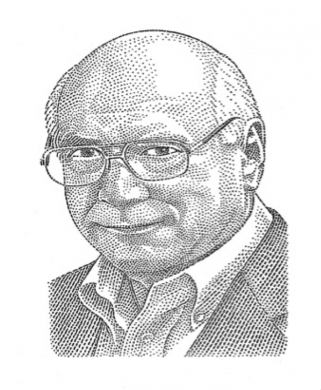
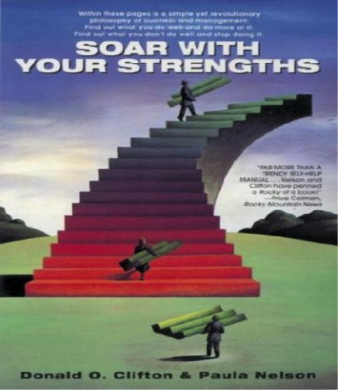
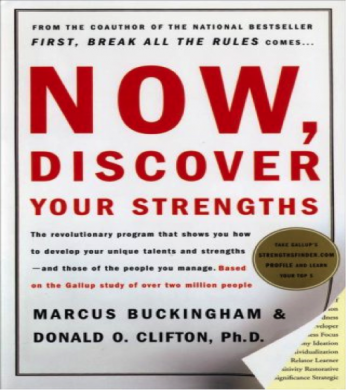
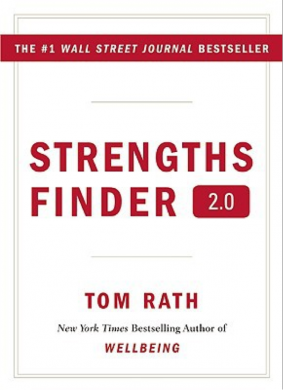
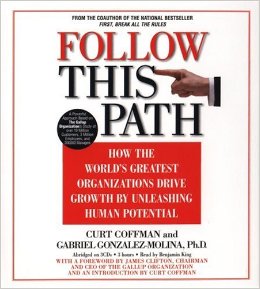
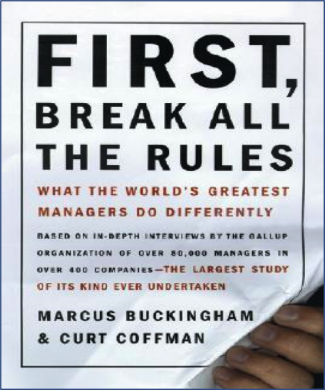
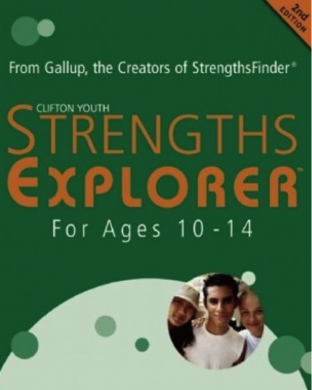
[…] In writing about Clifton’s contributions, The Positive Encourager wrote… […]
[…] began when Jesse O. Clifton, Ph.D., Father of Strengths Psychology, together with Tom Rath along with a group of scientists at Gallup produced the internet […]
[…] However, I didn’t always think this way. Rather, it took researching the concepts of strengths psychology made popular by Don Clifton to convince me. Through this research I became a big fan of the concepts shared in the Strengths […]
[…] weakness or grow our strengths. Latest thought is “Do your best and forget the rest.” Don Clifton was one of the first authors to change the discussion from working to improve ones weaknesses to […]
[…] should focus on what is right with people versus what is wrong, Don Clifton always quoted something similar. Perhaps in another blog, we can talk about what Great Leaders […]
what is the title to the book for students on the 34 strengths
Hello Shannon, Believe it is Soar With Your Strengths. But it may since have been upgraded.
You can discover more via this link.
https://www.gallup.com/cliftonstrengths/en/254033/strengthsfinder.aspx
[…] didn’t always think this way however. Rather, it took researching the concepts of strengths psychology made popular by Don Clifton to convince me of this. Now I am extremely confident that fighting against the nature of children […]
[…] I would like to give to you is the Theory of Overdone Strengths, the brainchild of psychologist Donald O.Clifton. If the idea of getting criticism is not palatable to you, one idea to help with giving and getting […]